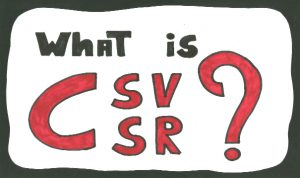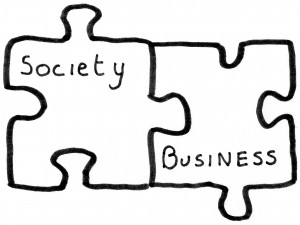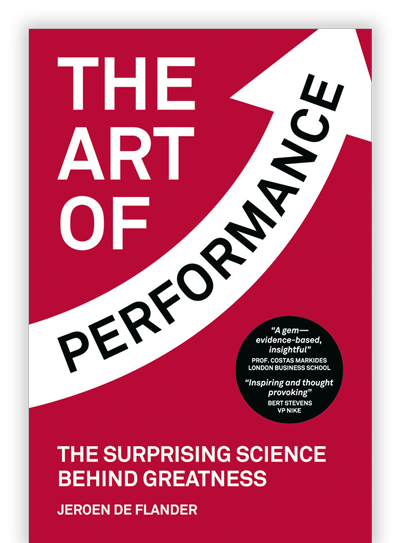CSV vs CSR? Creating Shared Value (CSV) is a new business strategy concept. And there’s a strong link to Corporate Social Responsibility (CSR).
In fact, Creating Shared Value is one of the few new innovative strategy ideas from the last 10 years to help you build a sustainable competitive advantage.
You might have seen the abbreviation CSV CSR which stand for Creating Shared Value – Corporate Social Responsibility. But what is the difference between CSV CSR? And will CSV replace CSR?
Some time ago, I spoke with Prof. Michael Porter at the Next Generation Strategy conference. One of the key strategy topics covered at the conference was CSV CSR.
As I’m convinced that shared value will have a major impact on strategy thinking, I want to spend some time explaining the concept and my own views in this guide.
In short, CSV CSR is a business strategy concept every strategist should know.

Creating Shared Value Summary
Here’s a quick chapter index to help you navigate:
- What is strategy?
- What is CSV Creating Shared Value?
- Shared Value Examples: Nestlé
- Shared Value PDF
- Corporate Social Value vs Corporate Social Responsability
And a short Shared Value definition: shared value is a business strategy concept developed by Porter and Kramer. The big idea: you strengthen your competitive position (company) AT THE SAME TIME while you advance society (the world).
What is strategy?
To understand the impact on strategy, we first need a solid understanding on what strategy is all about. You can read the following mini guide to understand the core concept of business strategy.
What is Creating Shared Value: CSV definition
To explain the Shared Value concept, let’s start with the Porter and Kramer’s definition: “You create shared value by enhancing the competitive position of a company while at the same time advancing the society in which it operates.”
The words ‘at the same time’ are very important. When some leaders look at the relationship between a company and society, they tend to think it’s a zero-sum game, a game with only one winner, like the concept of competition within an industry as explained previously.
When you do good for society, companies are lose. Companies thrive, society doesn’t benefit.
The strategy concept of Shared Value looks at the positive sum. It means that certain strategic choices will strengthen your business strategy and at the same time offer benefits for society.
So, what to create shared value? Look at your company’s activities that give you a sustainable competitive advantage and help society advance at the same time.
Let’s look at an example.
Examples of creating shared value: Nestlé
Nestlé needs high-quality raw materials to produce first-class dairy products. When they entered the market in India in the Moga district in 1962, local farmers were not able to consistently deliver this quality. Only 180 farmers passed the test. Nestlé worked with local farmers to improve their production techniques and long-term contracts to buy products at a fair price.
Today there are 75,000 farmers that reach Nestlé’s quality standards. In the Moga region, they have five times more doctors than other regions of India, better primary schools and basic needs like electricity are fulfilled.

Shared Value PDF: more details
Here’s a old presentation that is still relevant, explaining Shared Value in more detail.
It also includes the Nestlé CSR example
CSV vs CSR: how do they relate to each other?
Reducing the effects of CO2, fighting poverty and cradle-to-cradle: topics that you will find on quite a few corporate agendas today.
But are they launched with a positive sum effect in mind or are there other motives in play?
I’m not sure. I think it depends on the company.
When I look around, I see three Corporate Social Responsibility generations that I call the Donators, Avoiders and Creators. Let’s take a closer look.
“Shared Value can give rise to the next major transformation of business thinking”
Michael Porter – Harvard
Donators: 1ste generation corporate social responsibility
The first CSR generation is made up of Donators.
They are good citizens who believe in the traditional trade-off between organisations and society, but want to give something back to society, to compensate. The good cause is often randomly selected and driven by the personal preferences of a few individuals, most often the owner or CEO.
There is no ambition to strengthen the strategic positioning, but many use it to look good to the outside world and as an advertising campaign on their annual report or website.
In fact, I believe that quite a few Donators engage in CSR to create goodwill and keep off the activists’ radar.
Let me explain. The world around us is changing. The general public has taken a new position – sustainability has become the new norm, at least from a lip service perspective. Saying you are against sustainability is simply not done in today’s world. In Europe you’d be signing your dead warrant. In this new world, activists are also more aggressive and look for ‘bad’ examples that they can use and abuse in their campaigns.
So what do Donators do?
They try to create (read: buy) goodwill through CSR. These leaders commit an amount of money to show the world that they are sustainable: give the annual report a nice green shine, put some trees or windmills on the front page and show nice pictures of smiling people with their executive in some far-off country. And the costs are written off as an expense. CSR is a smart move, like point of sale material or a marketing campaign that wins the hearts of consumers.
“Corporate Social Responsibility should be about more than coloring your annual report green and giving a bag of money to your favorite charity in return for some nice pictures”
Avoiders: 2nd generation corporate social responsibility
The second CSR generation is made up of the Avoiders. Their main objective is to reduce any negative impact of their own activities.
Avoiders are aware that certain activities from their value chain have a negative impact on society and they try to reduce the negative impact. A good example is those organisations that are trying to reduce their energy use.
Creators: 3rd generation corporate social responsibility
The third CSR generation are the Creators. This group embraces the Creating Shared Value concept and view sustainability as a positive sum game.
This is where CSV CSR comes from.
They see Corporate Social Responsibility as an investment, not an expense. These leaders are also much more selective about the activities they target. They believe that no business can solve all of society’s problems so a worthy cause is not good enough. And focus on those social issues that affect the drivers of a company’s competitiveness in the locations in which it operates.
Where is your company at and where do you want to be? The answer isn’t black and white as most companies don’t fit clearly into one generation. But if I were to ask you to take the 80/20, you will most probably be able to pin it down.
Sustainability is more than the latest hype. Sustainability will help to create sustainable competitive advantage, a strategic differentiator. And those companies that find ways to create shared value will have a better competitive position.
This does not mean that you have to jump on the bandwagon without pausing for thought. Each company is unique with its own specific value chain, choice of strategy and geographical presence.
Not every country looks at sustainability in the same way or has the same growth challenges but these should not be excuses not to include the topic in your reflection process about your company’s strategy, a scenario where the company focuses on creating shared value.
CSV CSR is a topic that is getting more and more attention. It has become one of my more popular keynotes over the last year.
Like this guide about Creating Shared Value & Corporate Social Responsibility (CSV CSR)?
Want to inspire others?
Share now!



